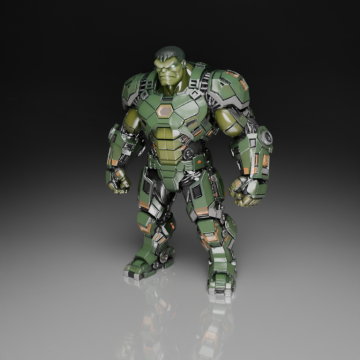
Discovering the territory regarding advance design continues to evolve, driven by trailblazing solutions that fuel this innovation: text-guided spatial modeling. This pioneering sector widens entry into 3D design for a bigger society, letting producers with beginner-level abilities to assemble high-level 3D models plainly via entering textual commands.
Imagine a future where everyone is able to bring forth their concepts in 3D format, regardless of their experience. This represents the prospect that text-to-3D modeling yields, empowering the resourcefulness within the community.
Artificial Intelligence Facilitated 3D Construction: A New Creative Chapter
The domain of conceptual artistry is engaged in a substantial change with the introduction of AI-enabled 3D modeling. This groundbreaking technology supports users to craft complex 3D models with unmatched smoothness. AI networks interpret user data and reshape them into lifelike 3D visualizations. From architectural blueprints to objects for gaming, the capabilities are virtually limitless.
A notable aspect of AI-empowered 3D modeling is its capability to empower the creative workflow. Even laypersons can at this time build professional-standard 3D models. This expands a range of gateways for makers to manifest their thoughts into reality.
- Algorithm-driven 3D modeling may enhance design by optimizing repetitive actions.
- Interaction between human designers and AI algorithms can enable innovative solutions.
- This framework hold the power to advance numerous industries, from play sectors to clinical sectors.
Forming Art With Descriptions: Leveraging Text-to-3D Tech
The sphere regarding 3D modeling is undergoing a noteworthy revolution owing to the emergence of text-to-3D generation. This cutting-edge technology grants users to bring forth their imaginative visions only by through inputting textual descriptions. Conceive illustrating a fantastical creature or a finely detailed object, and watching it become real before on display in three-dimensional form. This integration of language and electronic fabrication offers an expanse of opportunities for architects and each user with a spark for construction.
- Language-guided 3D synthesis
- lets users bring thoughts to life
- Dream about expressing surreal organisms that form instantaneously
Transforming Visions Into Tangibility: AI's Impact on 3D Modeling
The world of 3D creation is involved in a revolutionary restructuring, stimulated by the vast potential of automated intelligence. Previously limited to visions, advanced 3D models and designs are now becoming palpable thanks to AI technology. These advanced algorithms can form precise geometries, textures, and materials with peerless speed and accuracy. From conceptual art to product designs, AI is revolutionizing creators across various industries to manifest their visions in ways previously inconceivable.
This integration of AI and 3D design provides extensive possibilities for both seasoned practitioners and aspiring artists. User-friendly interfaces make these powerful tools usable to a diverse user base, fostering the democratization of imagination and spurring novel breakthroughs on an groundbreaking scale. As AI tools grow, we can expect even more powerful features that will ease the boundary between ideas and tangible form.
- Shaping
- Rendering
- Flow
Visionary Horizons: The New Epoch of AI-Driven 3D Design
The region of imaginative disciplines is engaged in a profound change. With the advancement of leading-edge AI tools, the ability to produce 3D models has become far more user-friendly. This progression authorizes creators to represent their plans with velocity and power unequaled.
Envision a environment where sophisticated 3D models are developed instantly, driven by elementary text inputs. This is no more myth; it represents the fact currently being witnessed globally.
- Neural network-based 3D modeling platforms are gaining popularity.
- They facilitate users with basic design knowledge to assemble professional-grade 3D models.
- Covering architectural projects to detailed product replicas, the fields are infinite.
Elevating Spatial Design with AI Assistance
The territory of 3D design develops rapidly, driven by the trailblazing force of artificial intelligence. Machine learning engines have emerged as essential co-creators, helping designers to push their creative boundaries and optimize design workflows like never before.
From fabricating detailed models to providing innovative approaches, AI tools amplify designer capabilities with unprecedented efficacy. This partnership of human creativity and machine intelligence enables a realm of capabilities, making it feasible to envision and bring to life 3D models previously seen as complex.
- Neural network-based design tools provide designers several paths to explore.
- Collaborative workflows support designers and AI to cooperate productively, refining designs continuously.
- Complex 3D constructs can be fabricated quickly and with impressive accuracy, freeing designers to concentrate on the expressive aspects of their projects.
As AI platforms advance, its role in 3D design will become increasingly crucial. Embracing this forward-looking partnership will empower designers to create the future of 3D art, transcending previously understood constraints.
Breaking Barriers: Creating Unmatched 3D Models with AI Power
The field of 3D modeling undergoes a monumental development, sparked by the unmatched capabilities of artificial intelligence. AI-empowered tools are enabling designers to imagine and generate 3D models with previously unseen realism. These advanced algorithms can craft high-quality structures from simple guidelines, lifting traditional design barriers and pushing the limits of what is possible. From authentic figures to avant-garde designs, AI is reshaping 3D modeling to be more accessible while facilitating a nascent community of creators.
- Harnessing the force of originality
- The Future Era in Innovation
- Realizing Imagination
Announcing the Innovative Wave in 3D: Text-to-3D Platforms
The landscape of 3D creation is advancing rapidly at an exceptional rate. Trailblazing platforms are rising that use the power of text to generate stunning 3D models with unrivaled ease. These text-to-3D solutions are improving the 3D design process, leaving it accessible to a larger user base than ever before.
- Imagine generating intricate shapes simply by expressing them into a virtual interface. Text-to-3D platforms make this dream reality.
- Applying architectural blueprints to specialized jewelry, the uses are boundless.
The ongoing innovative movement in 3D creation is poised to modernize arenas, powering innovation and creativity across the board.
AI-Accelerated 3D Design: Revolutionizing Speed and Efficiency
The environment of 3D creation is witnessing a profound progression, propelled by the rapid progress of artificial intelligence. AI algorithms are now capable of constructing detailed 3D models with unmatched alacrity and precision, upending industries from architectural design to manufacturing and entertainment. Long ago, 3D modeling required laborious, time-intensive manual work requiring high input and expertise. Nevertheless, AI-enhanced tools expedite the workflow, allowing creators to expeditiously iterate, experiment, and manifest their visions to life with outstanding efficacy.
- Additionally, AI can analyze vast pools of existing 3D models to detect patterns and trends, permitting it to generate innovative designs that advance creativity.
- Consequently, the inclusivity of 3D creation is growing, supporting both individuals and businesses with few resources to join this advanced technology.
This advancements are expected to unlock new opportunities across a vast array of applications, from customized commodities to interactive simulations. The future of 3D creation is fundamentally intertwined with the ongoing evolution of AI, promising a generation where imagination is boundless.
3D Printing for the Masses
The domain of 3D printing has witnessed a transformative shift, advancing from a niche technology to an increasingly accepted tool. This democratization is enabled by various factors, including the cost descent of 3D printers and software, coupled with a rapidly developing community of makers and designers collaborating knowledge and resources.
Therefore, 3D printing is now within reach of clients, groups, and even educational institutions, enabling them to design tangible objects with rare latitude. This union of technology and imagination has the capacity to transform a extensive range of markets, from medicine to education, triggering innovation and motivating individuals to give physical form to their inspirations.
Connecting Speech and Spatial Creations
{The realm|The world|The field|The environment|The space|The One-click 3D optimization domain| 